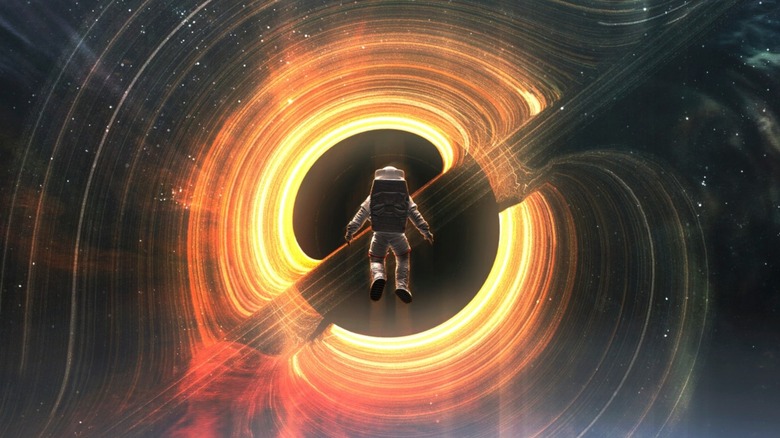
A distant observer would never actually see someone cross into the event horizon of a black hole, according to Einstein’s theory of relativity.
I’ve always understood that, according to general relativity, a distant observer of someone who falls into a black hole would see them slow down, then come to a virtual stop at the event horizon and become “smeared.” So how is it that LIGO can record two black holes combining in milliseconds?
Kevin Hooper Calgary, Alberta
Let’s consider GW150914, the first binary black hole merger detected via gravitational waves. The final black hole formed during the merger is 60 times the mass of the Sun, which means that its size is about 124 miles (200 kilometers) across. This is the typical size of the remnants from black hole mergers that we observe through gravitational waves with the Laser Interferometer Gravitational-wave Observatory (LIGO).
Now, how is a pulse of light sent by someone falling into a black hole different from the gravitational waves emitted during a merger? Optical light has a wavelength — the distance between two crests of a light wave — of about 1,000 nanometers (a strand of hair is about 90,000 nm wide). For someone falling into the black hole and sending out that pulse of light, the light will be emitted from some location close to the event horizon, or point of no return.
Gravitational waves, on the other hand, cannot be traced to a specific origin in the region of space-time around the black holes. This makes more sense when we look at our example signal. The waves produced during GW150914 have a wavelength of 1,864 miles (3,000 km), which is larger than the size of the system!
In other words, the main difference between gravitational waves and pulses of light is that the former can be thought of as being emitted from the entire dynamical, vibrating space-time around the merger of two black holes. They do not correspond to any particular location, such as the black hole event horizons, where gravity is so strong that not even light can escape.

source: https://astronomy.com/








